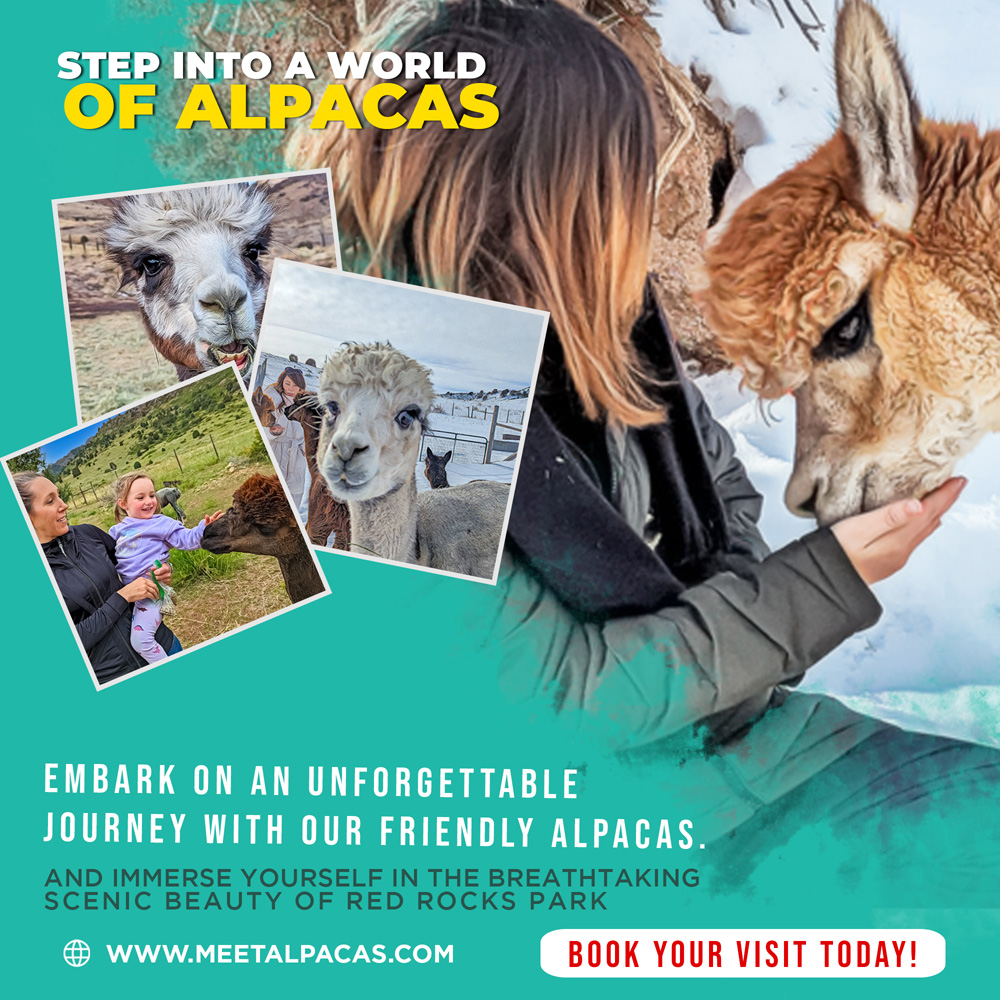Colorado alpaca adventures package by meetalpacas.com: The best way to get a sense of how alpacas are cared for is to visit the farm. It is a unique and fun experience, and kids love it! They can help feed the animals, clean stalls, and fill water buckets. It is a great way to teach responsibility, and it teaches them that even the little things make a big difference. The farm also demonstrates the diversity of income opportunities that can come from owning livestock. The quality of the herd, the acreage required, and the amount of work needed can have an impact on overall income results. See extra info at alpaca adventure tours in Denver, Colorado.

Keeping alpacas comfortable is essential, so you’ll want to ensure that their indoor living spaces are well-ventilated. They need to be able to stay cool in the summer, as sustained heat and humidity can lead to dehydration and other problems. You’ll also need to make sure they have access to clean water throughout the year. You might provide a water misting fan, use water coolers in the barn, or have a pond or kiddie pool for them to bathe in when needed. These simple things help to keep your alpacas healthy and happy.
Get ready for an Alpaca Adventure ! A Wildly Immersive and Hilarious Alpaca Adventure Perfect For All Ages : Embark upon an unforgettable magical experience with affectionate Alpacas, and explore the scenic mountain views of Red Rocks Park. We offer truly unique experiences that gets you up-close with these majestic friends. You’ll be entertained and educated on their habits, diets, and life on the ranch as you discover what makes these creatures so special.
As herbivores, alpacas only eat vegetation. They eat mostly grass, but their diets can also include leaves wood, bark or stems. Like other ruminants, alpacas have a three-chambered stomach that digests the roughage efficiently. Unlike other grazers, alpacas don’t eat much. According to the Alpaca Owners Association, a 125-lb. (57 kg) animal only eats around 2 lbs. (907 grams) per day. In general, alpacas eat 1.5 percent of their body weight each day.
Additionally, if you have any accessibility concerns that make hiking impossible, then there are also places to sit down next to the alpacas, which makes this activity available to everyone regardless of their ability or needs. The Smooth Alpaca Experience just so happens to have scenic mountain views of Red Rock Park. Yes, that’s right, the iconic Red Rocks Park and Amphitheatre where hundreds of concerts are held each year. Combine a visit to the venue with an alpaca experience. Are you looking for an educational opportunity for your kids? Come enjoy an alpaca experience that’s not only fun but also informative. This alpaca experience takes place on a fiber farm. This type of farm raises animals like alpacas, sheep, goats, llamas, angora rabbits, and more for their fleece and wool.
The alpaca comes in two breed types: huacaya (pronounced wuh-KAI-ya) and suri (SUR-ee). Huacayas, the more common type, account for about 85-90% of all alpacas. The two breed types vary primarily in terms of their fiber. How long do alpacas live? Generally, around 15 to 20 years. The longest documented lifespan of an alpaca is 28 years. How are alpacas different from llamas? People often confuse alpacas with llamas. While closely related, llamas and alpacas are very different animals. Llamas are much larger, about twice the size of an alpaca, with a weight range of 250 to 450 pounds. Alpacas weigh between 120 to 200 pounds. Llamas are primarily used for packing or for guarding herds of sheep or alpacas, whereas alpacas are primarily raised for their soft and luxurious fleece. Discover more details on meetalpacas.com.
As with all livestock, owners and visitors should use common sense and a degree of caution when working around alpacas. People working with alpacas should wear long pants and shoes or boots that have traction and cover the whole foot. Proper handling of alpacas, as well as all camelids, requires humans gaining their trust by using a calm voice and light restraint. Handling alpacas for herd husbandry is best taught to novice alpaca owners by experienced owners or experts.
So what do you DO with these animals? Alpacas are raised for their soft and luxurious fleece (fiber). Each shearing produces roughly five to ten pounds of fleece per animal, per year. This fleece, often compared to cashmere, can be turned into a wide array of products from yarn and apparel to tapestries and blankets. The fleece itself is recognized globally for its fineness, softness, light weight, durability, excellent thermal qualities, and luster.
The main difference between the breeds is the length and fineness of the wool-like fiber, according to the Food and Agriculture Organization of the United Nations (FAO). The Suri have very long fibers (“silky dreadlocks,” according to Alpaca Ventures), while the Huacaya have a more compact “crimpy” fleece, with shorter fibers. Guanacos are slightly larger than alpacas and much larger than vicuñas, but they are smaller and less heavily built than llamas, according to the University of Michigan’s Animal Diversity Web (ADW). Alpacas are the smallest members of the camel family. The average height at the shoulder is 3 feet (91.4 centimeters), according to Switzer. They are 4 to 7 feet (120 to 225 cm) long and weigh 121 to 143 lbs. (55 to 65 kilograms). By comparison, the llama stands almost 4 feet (1.2 m) at the shoulder and weighs from 286 to 341 lbs. (130 to 155 kg). Camels grow to 6.5 feet (2 m) and weigh from 880 to 1,325 lbs. (400 to 600 kg), according to the San Diego Zoo.